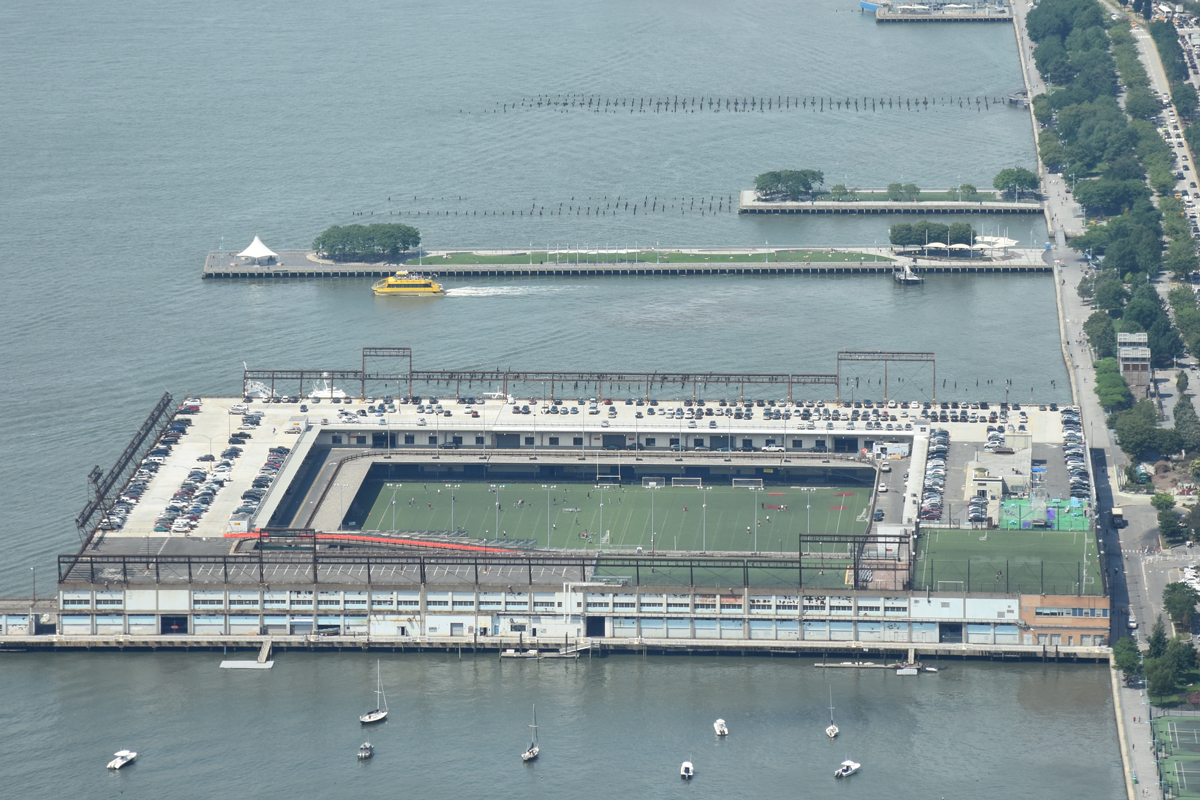
Michael Sorkin scrutinizes the privatization of public space and proposes using the private money for Pier 55 to transform the parking lots on Pier 40.
“We’ve been closely observing the ongoing contretemps over Barry Diller’s proposal to build a new entertainment pier on the site of the largely vanished Pier 55 at a project cost of $250 million. While we greatly admire the work of Thomas Heatherwick (the scheme’s imaginative designer), have no issue with generous philanthropy, and ardently wish to see the Hudson River Park become ever more splendid and capacious, we do wonder at the logic of this particular investment in the context of a public space obliged to financially fend for itself and monumentally strapped. More specifically, we wonder whether this enormous investment—and the program it will support—might be directed to a place where it is far more urgently needed and appropriately housed: Pier 40.
Pier 40 has represented a frustrating combination of problem and opportunity for years, somehow stymying all efforts to realize its full public potential. At present, it provides invaluable and beloved sports fields to the community but its primary “service” is as a huge parking lot. This may be a cash cow for the Hudson River Park Trust but it’s surely the least appropriate possible use for such a vast and charismatically-sited facility. Likewise, most of the proposals that have been floated for Pier 40’s renewal over the years have been over-focused on two private styles of reconstruction, on luxury housing or office space, rather than on realizing its truly remarkable potential as a scene of pleasure and recreation.
Our idea is simple: invest the $250 million earmarked for Pier 55 in Pier 40. Build facilities—theaters and a park—of exactly the same size and capacity as planned for the uptown site. Then add as much additional fabulousness as possible. The attached sketches show expanded recreational and sports facilities (including indoor tennis courts and gyms and a pool), more theaters and performance spaces (featuring a large amphitheater with a floating stage that might migrate around the city), a vast forested rooftop and sculpture garden, a marina, a complex of waterside restaurants, a school, community offices, a small hotel, ample opportunities for strolling and sitting along the water, and dock space for a variety of ships and boats. The whole might not generate quite the revenue as parked cars but the stream could be ample and the initial subvention would take care of the expense of construction. Thomas Heatherwick would be great choice for architect!” – Michael Sorkin
Read more ↓
How to Solve NYC’s Most Awkward Developer Feud, The Architect’s Newspaper
Image Courtesy of ↓
MusikAnimal/Wikimedia Commons